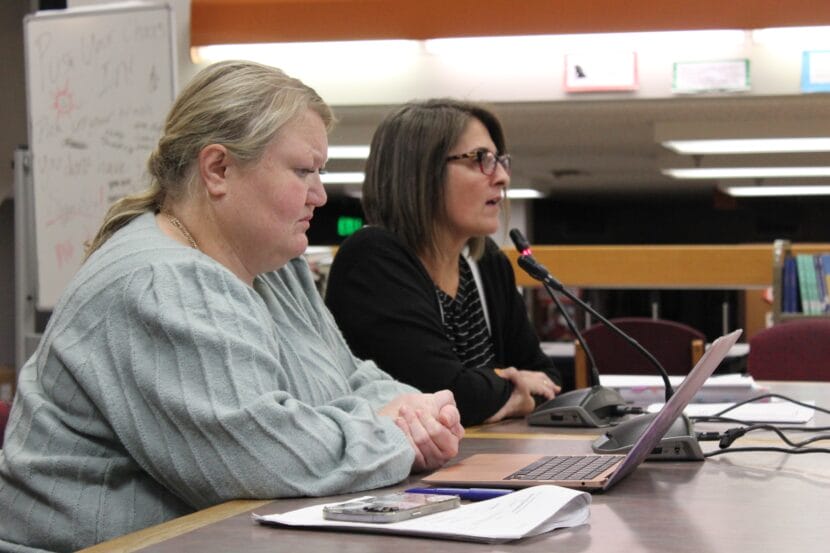
An audit of the Juneau School District shows it ended the last fiscal year with an almost $2 million deficit in its operating fund, up from $1.2 million at the start of the last fiscal year.
On top of that, lower-than-expected enrollment this fall has now grown that deficit to nearly $3 million.
In the coming weeks, district leaders will look for ways to address it.
Audit shows procedural and accounting problems
The audit, which was presented to the board on Tuesday, said district administration violated city and school board policies by spending more money than the board had budgeted without getting approval from the board and city first.
“You spent more than the board had approved and more than CBJ had approved, so that’s where the noncompliance came into place,” Karen Tarver, a partner with auditing firm Elgee Rehfeld, said at the school board meeting.
Cassee Olin, the district’s administrative services director, said the district faced several unexpected costs at the end of the last fiscal year, including some related to its contract agreement with the teachers union. She said the district is now providing the school board with monthly financial reports.
The audit also noted issues with implementing new accounting standards, maintenance of student records and Medicaid billing. Olin said administrative staff are training staff on the new standards and analyzing whether the district should continue to bill for Medicaid services.
Lower enrollment makes deficit grow
Meanwhile, the number of students in the district continues to shrink, causing the operating fund deficit to grow even more.
The district projected that 4,240 students would attend Juneau schools this year. But after schools counted the number of students attending throughout October, the average daily number of students the district submitted to the state was 4,114.
State funding for the district is based on enrollment, and a 126-student gap equals about a $1 million loss in projected revenue.
That could shrink slightly after state education officials make adjustments based on factors like school size and the number of students with intensive special needs. Superintendent Frank Hauser said the school size factor, which gives more state funding to smaller schools, might benefit the district in the final funding calculation.
“When we start looking at final numbers, there could be some increases for the school size factor calculation for some of our schools, because we do have a little bit lower enrollment numbers,” he told the school board.
The district will get that adjusted number from the state in December.
Board to address this year’s gap
Between the costs at the end of last year and declining enrollment, the district faces a nearly $3 million deficit in its operating fund.
The operating fund, which includes state and city funding, pays for salaries and benefits. The district also has a special revenue fund, which can only be spent on specific things; a capital project fund, which pays for building repairs and maintenance; and a permanent fund.
The district can’t move money from its special revenue or capital project funds into the operating fund. And the city has already funded the school district to “the cap,” a limit to local funding set by the state.
That means district leaders will have to find other ways to address the deficit.
Earlier this year, the Juneau School District found itself with a $758,000 funding gap when Gov. Mike Dunleavy vetoed half of the one-time education funding approved by the Alaska Legislature. They addressed it by eliminating two staff positions and paying for four teaching positions with pandemic aid instead of operating funds.
The school board will start to review potential budget revisions for this fiscal year at their next meeting on Dec. 12.
Work on next year’s budget will start soon, too. Board President Deedie Sorensen said districts across the state are facing budgeting challenges as they look ahead to next year. She and other board members attended an Association of Alaska School Boards conference last week.
“I don’t think I talked to anybody, in any district, who isn’t really behind the 8-ball,” Sorensen told the board.
In Anchorage, district leaders may have to increase class sizes or cut certain programs to make up for a $95 million deficit. The Kenai Peninsula Borough School District expects to start the next fiscal year with at least a $13 million deficit.
